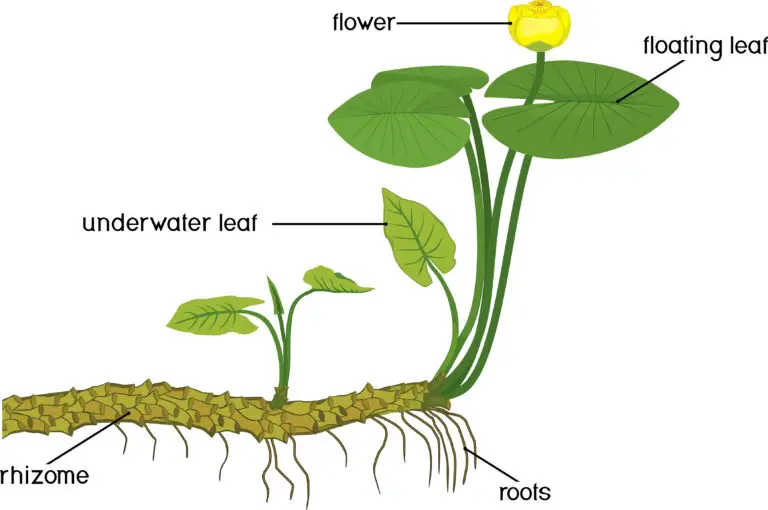Rhizome

Table of Contents
What is a Rhizome?
A rhizome is a modified subterranean stem of a plant that is horizontally oriented and grows underground. Unlike a typical plant stem that grows vertically, a rhizome grows horizontally, sending out roots and shoots at nodes along its length. Rhizomes are a type of plant organ that functions in vegetative reproduction and allows certain plants to spread and colonize new areas.
Characteristics of Rhizomes
Horizontal Growth
Rhizomes grow horizontally beneath the soil surface, allowing the plant to spread laterally. This horizontal growth enables the plant to colonize new areas and form interconnected networks.
Nodes and Internodes
Rhizomes have nodes, which are points along the stem where roots and shoots emerge. Internodes are the segments between nodes. New shoots can arise from the nodes, contributing to the vegetative propagation of the plant.
Adventitious Roots
Adventitious roots, which arise from nodes on the rhizome, anchor the plant in the soil and absorb water and nutrients. These roots contribute to the plant’s ability to survive and thrive in various environments.
Vegetative Reproduction
Rhizomes play a crucial role in vegetative reproduction. As the rhizome grows horizontally, new shoots can emerge from nodes and develop into independent plants. This allows the plant to reproduce asexually and create genetically identical offspring.
Examples of Plants with Rhizomes
Many plant species exhibit rhizomatous growth. Examples include ginger (Zingiber officinale), bamboo (members of the Bambusoideae subfamily), and common grasses like Bermuda grass (Cynodon dactylon).
Functions of Rhizomes
Colonization and Spread: Rhizomes contribute to the efficient colonization and spread of plants in a given area, especially in grasses and some perennial herbs.
Regeneration: Rhizomes facilitate the regeneration of plants after disturbances, as new shoots can quickly emerge from the nodes, allowing the plant to recover.
Asexual Reproduction: The ability of rhizomes to produce new shoots at nodes allows for asexual reproduction, contributing to the genetic continuity of the plant population.
Storage of Resources: Some rhizomes store nutrients and carbohydrates, providing a reservoir of resources that can support the plant during periods of stress or contribute to rapid growth.
Related Links
Botany
Frond
Herbivore
Thylakoid